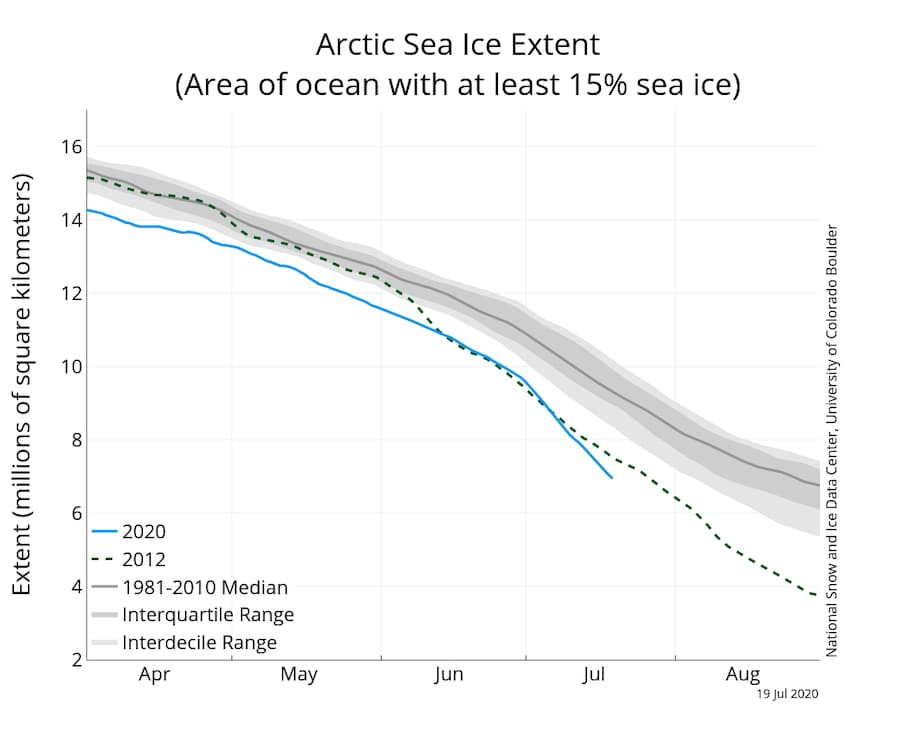A Time of Transitions
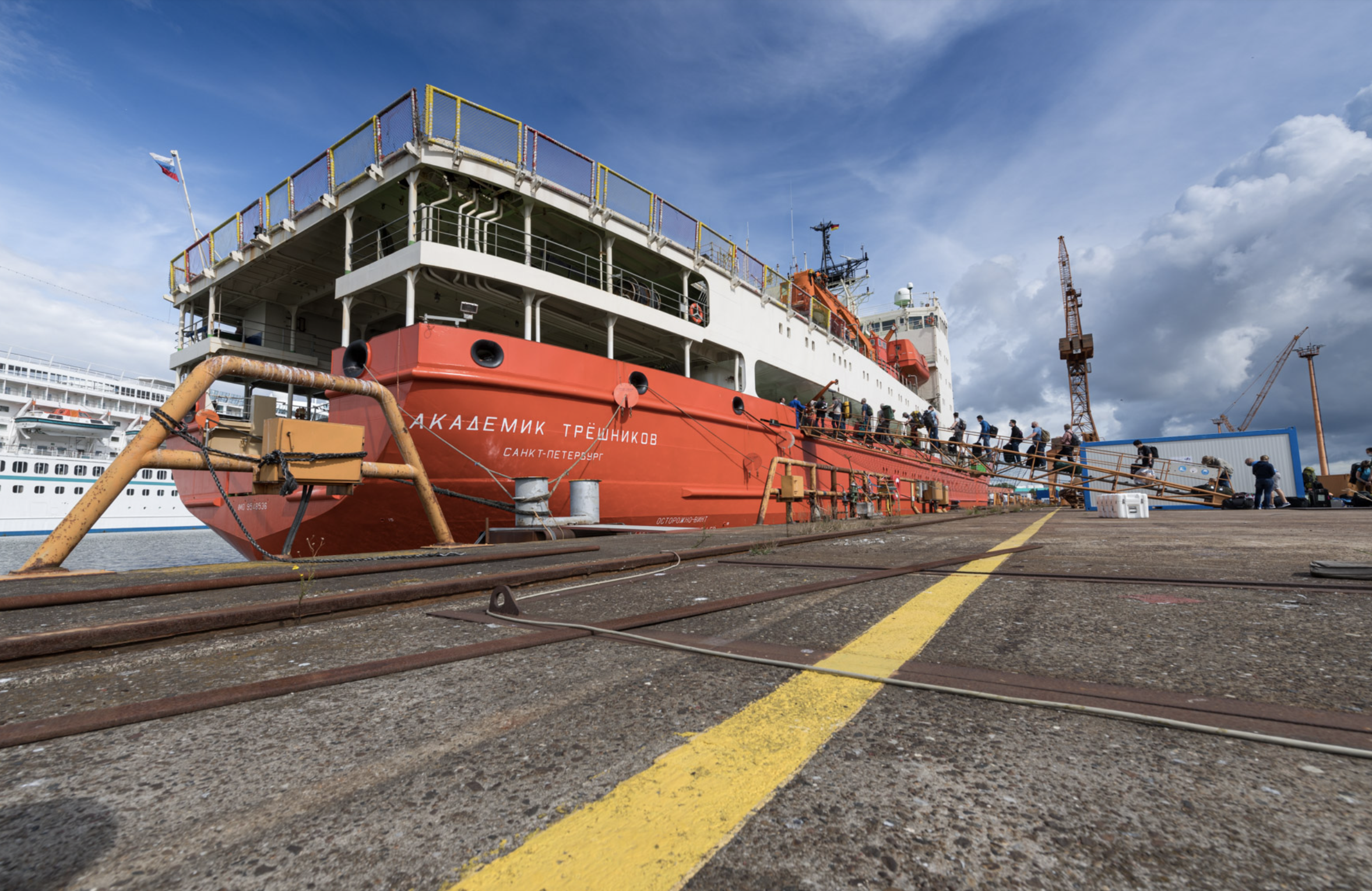
Right after we reported in last week's MOSAiC Monday that the MOSAiC ice floe was coming to the end of its life cycle, the floe officially broke apart and was no more. Fortunately, most of the research camp infrastructure had all been evacuated from the ice by then. The next task will be to recover the distributed network of instruments that was set up last fall when the expedition first began. Some of these instruments were installed as far as 50 km away from the Polarstern! Then, participants for the final leg will arrive via the Russian research vessel Akademik Tryoshnikov to carry the expedition through its final stretch.
Photo: MOSAiC leg 5 participants and crew board the Akademik Tryoshnikov and prepare to begin their journey to the Polarstern. Photo credit: Steffen Graupner/AWI
Where is the Ice?
The MOSAiC ice floe breakup comes at a time when the sea ice extent in the Arctic has reached record low levels for this time of year (solid blue line on graph). Scientists are attributing this partly to the record heat wave that hit Siberia in January and lasted into July. Melt ponds are widespread across the Arctic Ocean, a sight that has been familiar to MOSAiC participants on board the Polarstern for the last several weeks. Sea ice is one of the central areas of study of the MOSAiC expedition, and data collected during MOSAiC will provide insight into how Arctic sea ice changes seasonally, and what might happen to it in the future.
Washington Post article: Arctic Sea Ice is in a Downward Spiral
Opportunity for Indigenous Youth: Video Contest
The Affiliated Tribes of Northwest Indians (ATNI) is requesting video submissions from all Indigenous youth for the 2021 National Tribal Leadership Climate Change Summit. The ATNI wants to explore the impacts of climate change through the eyes, experiences, and passions of Indigenous youth. Entrants should submit a video relating to indigenous peoples and climate change, while conveying a message of hope. Up to four winners will receive full travel awards ($900 maximum value) and up to four runners-up will receive partial travel awards ($400 maximum value) to attend the in-person Summit in Seattle (May 16-20, 2021).
Learn more, browse examples, and submit a video by September 7, 2020
 #askmosaic: A Plethora of Polar Bears
#askmosaic: A Plethora of Polar Bears
This week's question comes from Corbett from Middleton Middle School: How many polar bears have you seen?
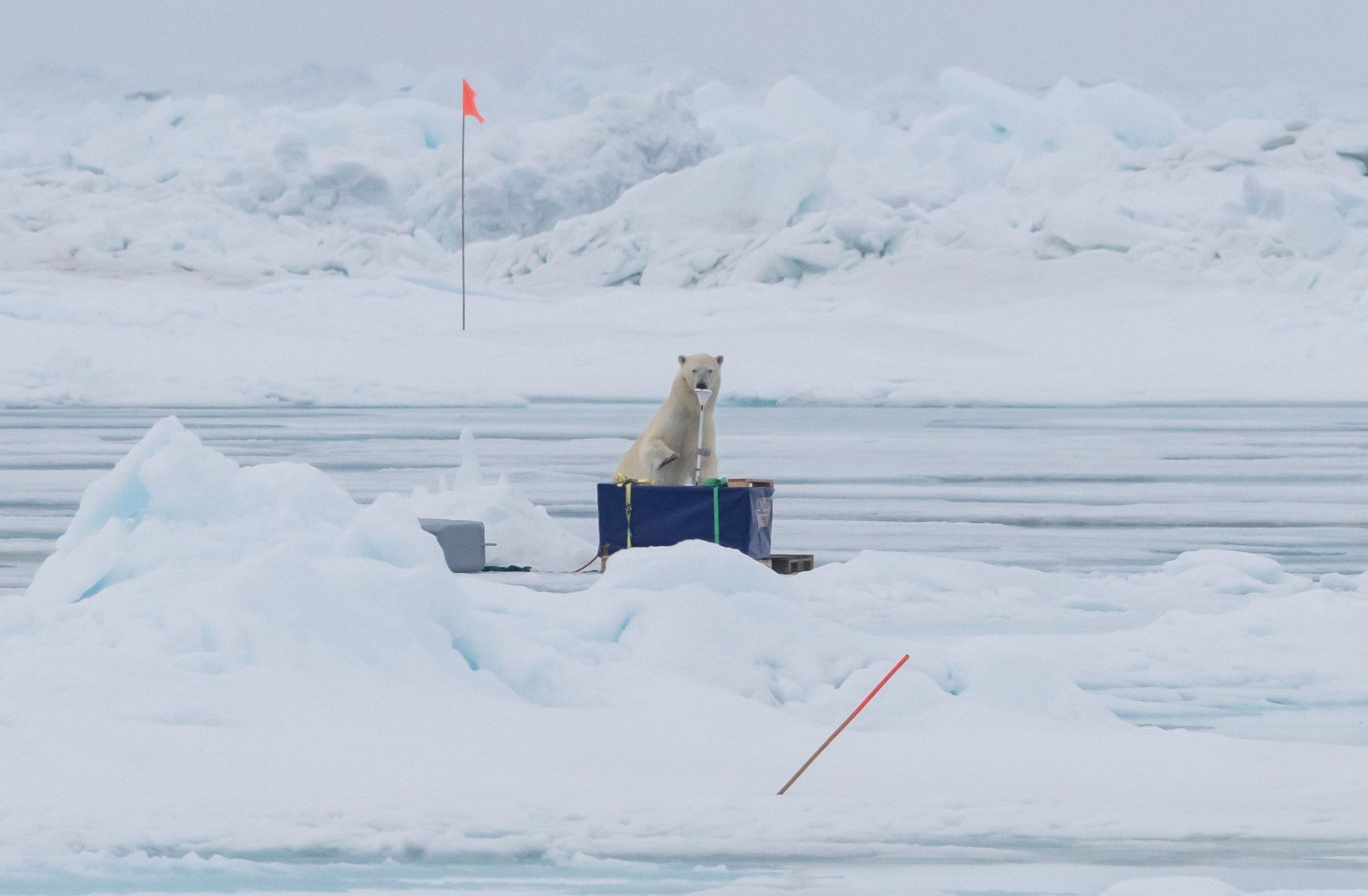
During this leg alone, expedition participants have had 19 encounters with polar bears! Although this sounds like a lot, it isn't terribly surprising as the Polarstern has drifted closer and closer to the ice edge where polar bears like to hang out and hunt. Fortunately the MOSAiC safety and logistics team has always made sure both the polar bears and expedition team members are safe and stay far away from one another. Photo credit: Lianna Nixon/CIRES
Curious about the Arctic and MOSAiC expedition? Here are three ways you can send us your #askmosaic questions:
1. Submit them
2. Email them: mosaic@colorado.edu with subject line "#askmosaic"
3. Tag us on social media: #askmosaic
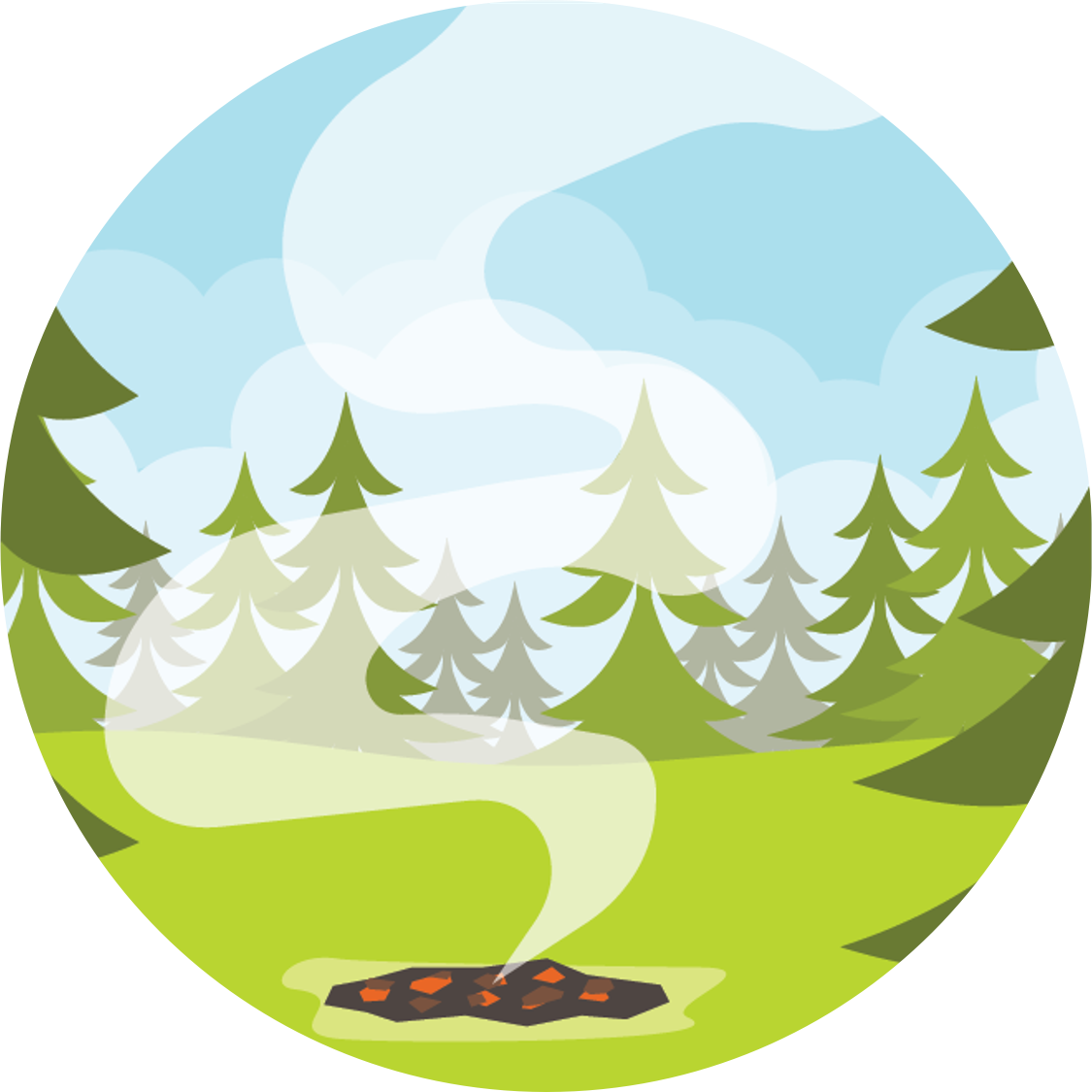 MOSAiC Virtual Summer Camp
MOSAiC Virtual Summer Camp
Did you or your kids have summer camp plans that fell through because of COVID? Not to worry! Tune in to MOSAiC Monday each week for a fun, hands-on and engaging virtual summer camp activity related to MOSAiC or the Arctic. All MVSC activities should be done with parent supervision!
This Week's Activity: Can You Camo?
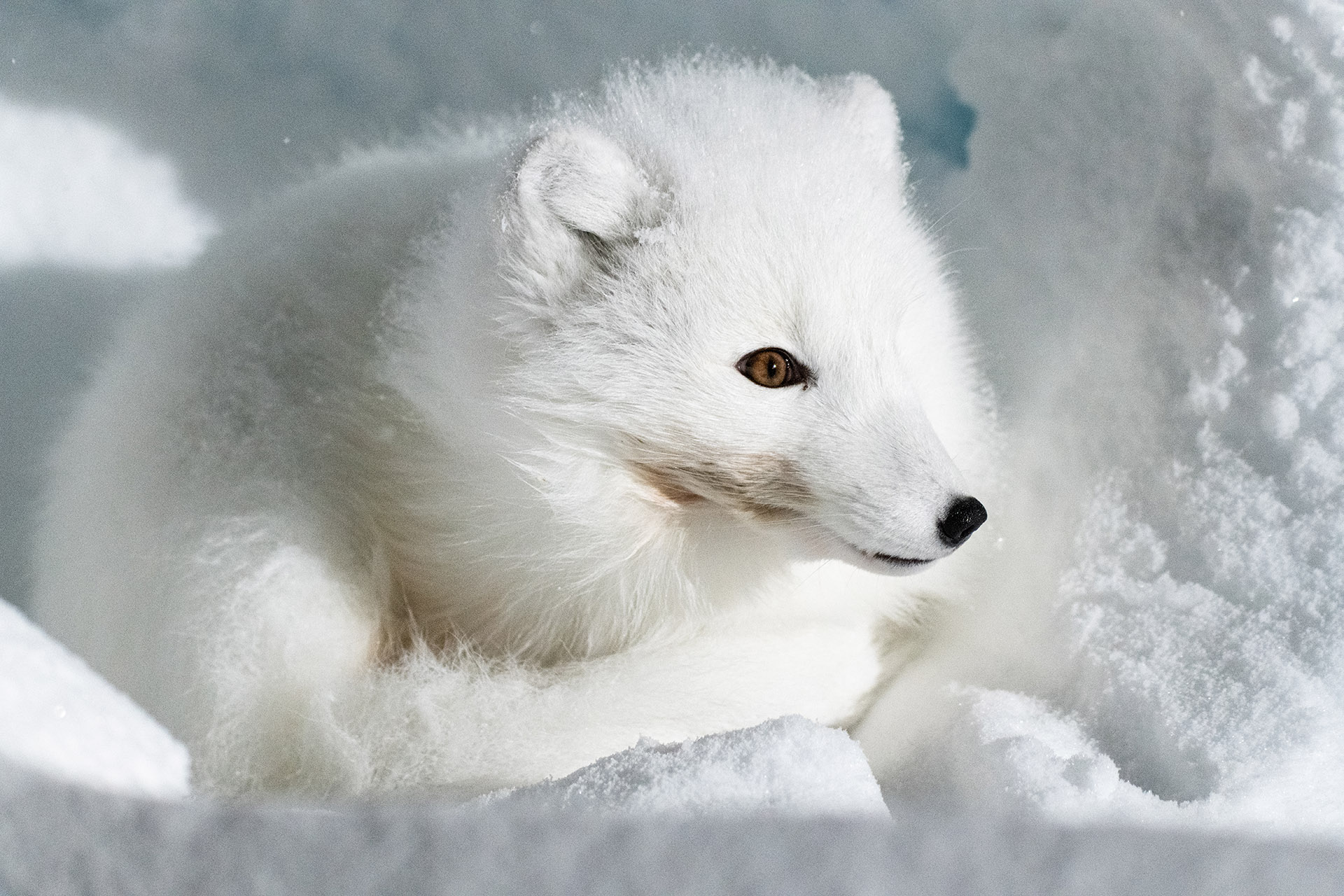
Many animals in the Arctic and other ecosystems around the world use camouflage as an adaptation for survival. Some Arctic foxes, for example, actually experience a change in fur color seasonally to match their changing surroundings - white in the winter, gray in the summer.
Your task is to try to camouflage yourself in your current environment. Choose either a room in your home or a space outside - this will serve as your habitat. What colors and textures do you see in your habitat? How might you blend in?
Photo credit: Michael Ginzburg
What you will need:
- Pencil and paper
- Whatever you can find in your closet or home! Suggestions:
- Clothes from your closet
- Craft supplies like feathers, construction paper, cardboard, paint, etc.
- Fabric
What to do:
- Using your pencil and paper, first draw out a couple of ideas for how you will design your camouflage outfit. What kinds of things will you need to consider? What will you make the different components of your outfit out of? Draw some various designs and weigh the pros and cons of each.
- Create an outfit that will camouflage you in your habitat.
- Ask someone you live with to assess how well you did - are they able to see you in your habitat? Do they have suggestions for how you can improve your camouflage?
- If improvements to your camouflage can be made, make them and repeat #3 above.
Check out our full list of virtual and at-home polar learning resources!
 Educators' Corner
Educators' Corner
The school year is fast approaching, and we're here to help all of you awesome educators with your school year planning! Each week throughout the summer, we'll use Educators' Corner to highlight MOSAiC and Arctic-related lessons, multimedia resources, and other educational materials that you can use in your NGSS (or similar) classroom, in person or remotely. Are you looking for a particular kind of educational resource? Let us know! Email us at mosaic@colorado.edu.
For Your Classroom: Arctic Curricula Series for Middle and High School
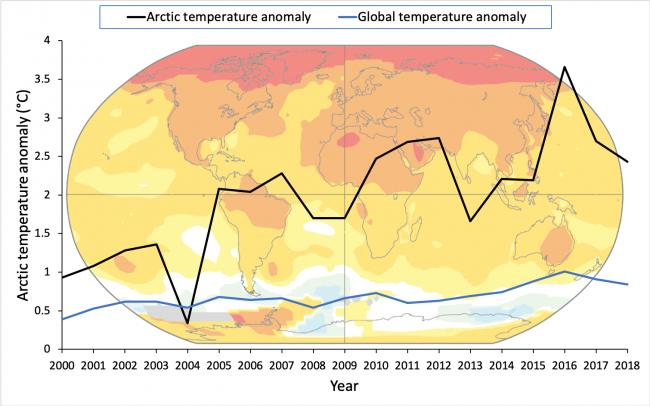
Looking for new and compelling ways to teach about the nature of science and climate change in your classroom? Look no further! We've developed two units connected to the NGSS Nature of Science concepts and Earth Systems standards about the MOSAiC expedition and Arctic climate. In the Exploring the New & Old Arctic unit, students will compare and contrast past (Fram) and present (MOSAiC) Arctic expeditions, to prepare for the future. The unit is developed around the driving question, “How have scientific questions, methods, technologies, and our knowledge of the Arctic changed over time?.” In the second unit, Arctic Feedbacks: Not all Warming is Equal, students explore parts of the Arctic climate system to understand why the Arctic might be warming twice as fast as the rest of the world, a phenomena known as Arctic amplification.
These two units can be used in their entirety, or select lessons can be pulled from the units and plugged in to your existing curriculum.
Go to the Exploring the New & Old Arctic curriculum (appropriate for grades 6-12)
Go to the Arctic Feedbacks Curriculum (appropriate for grades 9-12)
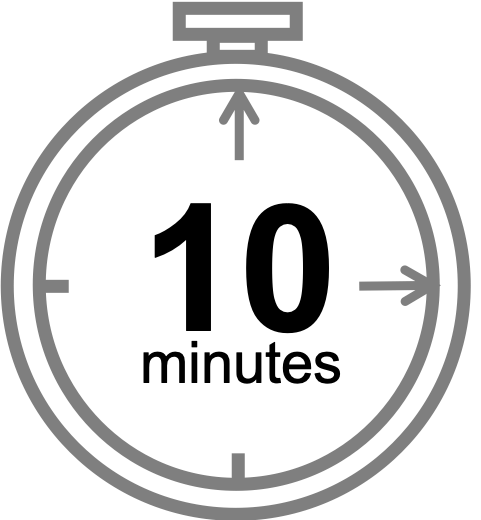 MOSAiC Weekly Tracking
MOSAiC Weekly Tracking
Plot the Polarstern
Each week we will provide you with the latitude and longitude coordinates of the Polarstern so that you can track its journey across the Arctic.
Download the map to plot coordinates
Download a larger map of the Arctic for a bigger picture view of the expedition area
Location of the Polarstern
| Date | Latitude | Longitude |
| September 16, 2019 | 69.68 N | 18.99 E |
| September 23, 2019 | 72.31 N | 26.93 E |
| September 30, 2019 | 85.12 N | 138.05 E |
| October 4, 2019** | 85.08 N | 134.43 E |
| October 7, 2019 | 85.10 N | 133.82 E |
| October 14, 2019 | 84.85 N | 135.03 E |
| October 21, 2019 | 84.97 N | 132.73 E |
| October 28, 2019 | 85.47 N | 127.07 E |
| November 4, 2019 | 85.88 N | 121.70 E |
| November 11, 2019 | 85.82 N | 116.00 E |
| November 18, 2019 | 86.05 N | 122.43 E |
| November 25, 2019 | 85.85 N | 121.35 E |
| December 2, 2019 | 85.97 N | 112.95 E |
| December 9, 2019 | 86.25 N | 121.40 E |
| December 16, 2019 | 86.62 N | 118.12 E |
| December 23, 2019 | 86.63 N | 113.20 E |
| December 30, 2019 | 86.58 N | 117.13 E |
| January 6, 2020 | 87.10 N | 115.10 E |
| January 13, 2020 | 87.35 N | 106.63 E |
| January 20, 2020 | 87.42 N | 97.77 E |
| January 27, 2020 | 87.43 N | 95.82 E |
| February 3, 2020 | 87.42 N | 93.65 E |
| February 10, 2020 | 87.78 N | 91.52 E |
| February 17, 2020 | 88.07 N | 78.52 E |
| February 24, 2020 | 88.58 N | 52.87 E |
| March 2, 2020 | 88.17 N | 31.02 E |
| March 9, 2020 | 87.93 N | 24.20 E |
| March 16, 2020 | 86.87 N | 12.70 E |
| March 23, 2020 | 86.20 N | 15.78 E |
| March 30, 2020 | 85.37 N | 13.27 E |
| April 6, 2020 | 84.52 N | 14.38 E |
| April 13, 2020 | 84.28 N | 14.97 E |
| April 20, 2020 | 84.52 N | 14.57 E |
| April 27, 2020 | 83.93 N | 15.65 E |
| May 4, 2020 | 83.92 N | 18.03 E |
| May 11, 2020 | 83.47 N | 13.08 E |
| May 18+, 2020 | 83.32 N | 8.68 E |
| May 25+, 2020 | 82.43 N | 8.28 E |
| June 1+, 2020 | 81.33 N | 9.93 E |
| June 8+, 2020 | 78.10 N | 12.73 E |
| June 15+, 2020 | 82.20 N | 8.18 E |
| June 22, 2020 | 81.95 N | 9.27 E |
| June 29, 2020 | 82.03 N | 9.88 E |
| July 6, 2020 | 81.67 N | 5.22 E |
| July 13, 2020 | 81.40 N | 0.28 E |
| July 20, 2020 | 80.78 N | 0.42 W |
| July 27, 2020 | 79.55 N | 2.37 W |
| August 3, 2020 | 78.60 N | 4.37 W |
| August 10, 2020 | 79.90 N | 5.52 W |
**Day when MOSAiC reached the ice floe that the Polarstern will become frozen in and drift with for the next year.
+ Indicates when the Polarstern traveled under its own engine power (no drifting)
Log MOSAiC Data
Keep track of Arctic conditions over the course of the expedition:
Download Data Logbook for Sept. 2019 - Dec. 2019
Download Data Logbook for Dec. 2019 - Mar. 2020
Download Data Logbook for Mar. 2020 - June 2020
Download Data Logbook for July 2020 - Oct. 2020
| Date | Length of day (hrs) | Air temperature (deg C) at location of Polarstern | Arctic Sea Ice Extent (million km2) |
| September 16, 2019 | 13.25 | High: 10 Low: 4.4 | 3.9 |
| September 23, 2019 | 12.35 | High: 6 Low: -1 | 4.1 |
| September 30, 2019 | 9.1 | -4.7 | 4.4 |
| October 4, 2019** | 6.27 | -13.0 | 4.5 |
| October 7, 2019 | 3.05 | -8.2 | 4.6 |
| October 14, 2019 | 0 | -14.7 | 4.8 |
| October 21, 2019 | 0 | -12.8 | 5.4 |
| October 28, 2019 | 0 | -18.3 | 6.8 |
| November 4, 2019 | 0 | -18.9 | 8.0 |
| November 11, 2019 | 0 | -25.5 | 8.7 |
| November 18, 2019 | 0 | -10.7 | 9.3 |
| November 25, 2019 | 0 | -18.4 | 10.0 |
| December 2, 2019 | 0 | -26.6 | 10.4 |
| December 9, 2019 | 0 | -23.1 | 11.2 |
| December 16, 2019 | 0 | -19.2 | 11.8 |
| December 23, 2019 | 0 | -26.9 | 12.2 |
| December 30, 2019 | 0 | -26.4 | 12.6 |
| January 6, 2020 | 0 | -28.0 | 13.0 |
| January 13, 2020 | 0 | -30.7 | 13.1 |
| January 20, 2020 | 0 | -27.1 | 13.6 |
| January 27, 2020 | 0 | -22.5 | 13.8 |
| February 3, 2020 | 0 | -28.8 | 14.1 |
| February 10, 2020 | 0 | -26.2 | 14.5 |
| February 17, 2020 | 0 | -31.9 | 14.4 |
| February 24, 2020 | 0 | -24.0 | 14.6 |
| March 2, 2020 | 0 | -35.5 | 14.8 |
| March 9, 2020 | 0 | -37.9 | 14.7 |
| March 16, 2020 | 10.5 | -27.5 | 14.7 |
| March 23, 2020 | 16.5 | -28.7 | 14.4 |
| March 30, 2020 | 24 | -28.6 | 14.0 |
| April 6, 2020 | 24 | -18.2 | 13.7 |
| April 13, 2020 | 24 | -25.8 | 13.6 |
| April 20, 2020 | 24 | -10.2 | 13.3 |
| April 27, 2020 | 24 | -11.7 | 12.8 |
| May 4, 2020 | 24 | -16.2 | 12.8 |
| May 11, 2020 | 24 | -10.4 | 12.4 |
| May 18, 2020 | 24 | -5.1 | 11.7 |
| May 25, 2020 | 24 | 0.4 | 11.5 |
| June 1, 2020 | 24 | 0.0 | 11.1 |
| June 8+, 2020 | 24 | -0.1 | 10.6 |
| June 15+, 2020 | 24 | -0.4 | 10.1 |
| June 22, 2020 | 24 | -0.4 | 9.6 |
| June 29, 2020 | 24 | 0.5 | 9.2 |
| July 6, 2020 | 24 | 0.6 | 8.2 |
| July 13, 2020 | 24 | 0.2 | 7.2 |
| July 20, 2020 | 24 | -0.1 | 6.2 |
| July 27, 2020 | 24 | 1.9 | 5.8 |
| August 3, 2020 | 24 | 1.2 | 5.5 |
| August 10, 2020 | 24 | 0.9 | 5.1 |
*Note: We expect data to fall within the following ranges: Length of day, 0-24 hours; Temperature, -40 to 14 degrees C; Sea ice extent, 3-15 million km2
**Day when MOSAiC reached the ice floe that the Polarstern will become frozen in and drift with for the next year.
Is there something you'd like to see in MOSAiC Monday? Let us know!
Send us your feedback
New to MOSAiC Monday? Check out past editions!
Browse more expedition-related educational resources, videos, and blogs
Email us! mosaic@colorado.edu

